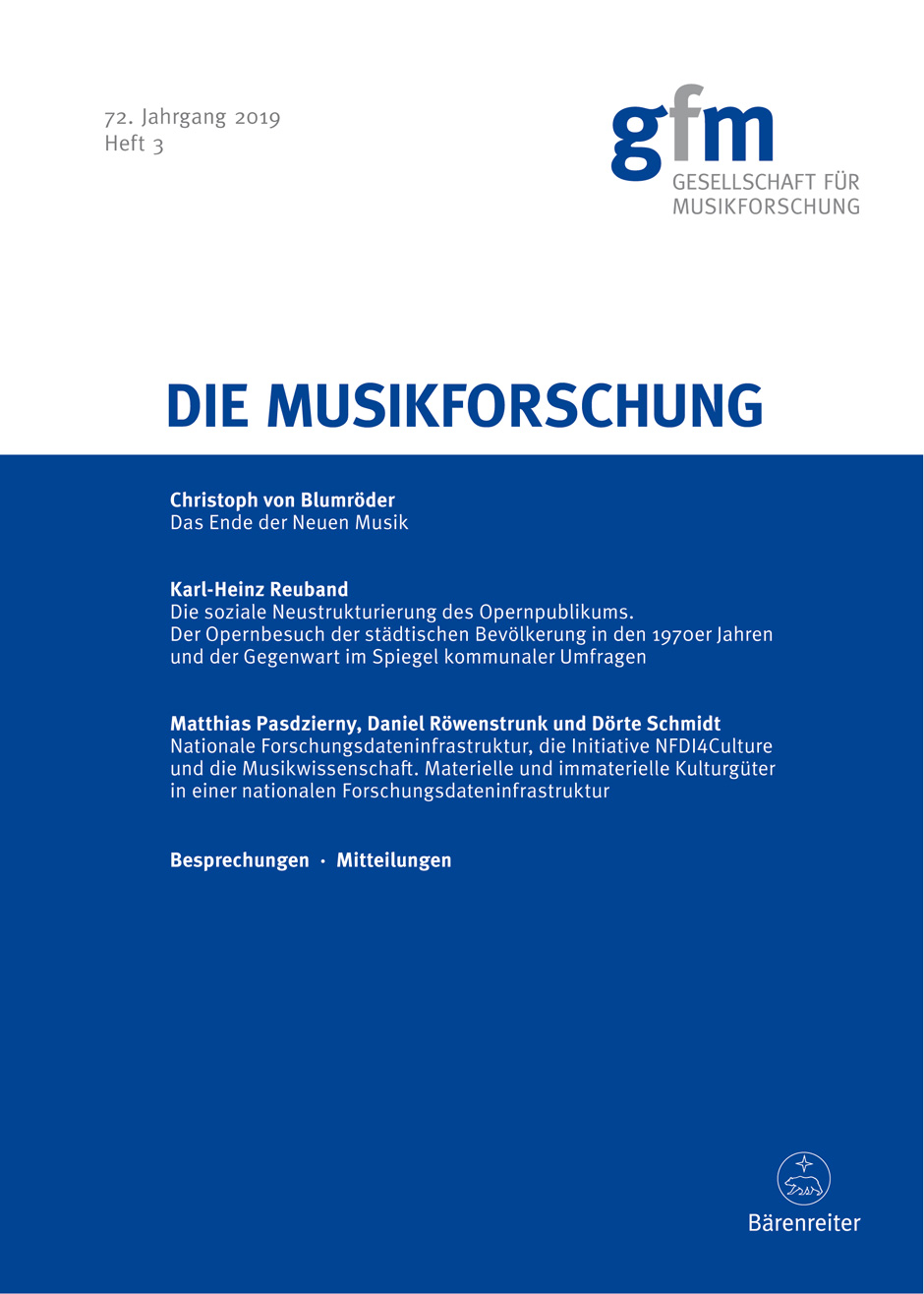Die soziale Neustrukturierung des Opernpublikums
Der Opernbesuch der städtischen Bevölkerung in den 1970er Jahren und der Gegenwart im Spiegel kommunaler Umfragen
DOI:
https://doi.org/10.52412/mf.2019.H3.45Abstract
This article focuses on the changes in opera attendance based on representative population surveys in the German cities of Hannover and Nurnberg from the 1970s onwards. It can be demonstrated that the relationship between age and opera attendance has reversed over time: whereas in the 1970s attendance decreased with increasing age, it nowadays increases with increasing age. The reversal is the result of a decrease in opera attendance on the part of younger audiences and an increase on the part of older audiences. Due to the latter development the increase of the average age of opera audiences has been greater than one would have expected on the basis of the decline in the younger generation alone, and it is also greater than the increase in average age of the general population. At the same time, there are indications that people with higher academic qualifications (Abitur and university degrees) have become less likely to attend opera than in the 1970s. These trends are not characteristic of opera attendance alone. Similar processes have occurred in other areas of participation in "high" culture, such as theater and museums. Changes in musical preferences can only partially explain the reversal of opera attendance. The changes observed in Hannover and Nurnberg reflect a general reversal in age relationship that has affected (high-) cultural life in Germany as a whole.






